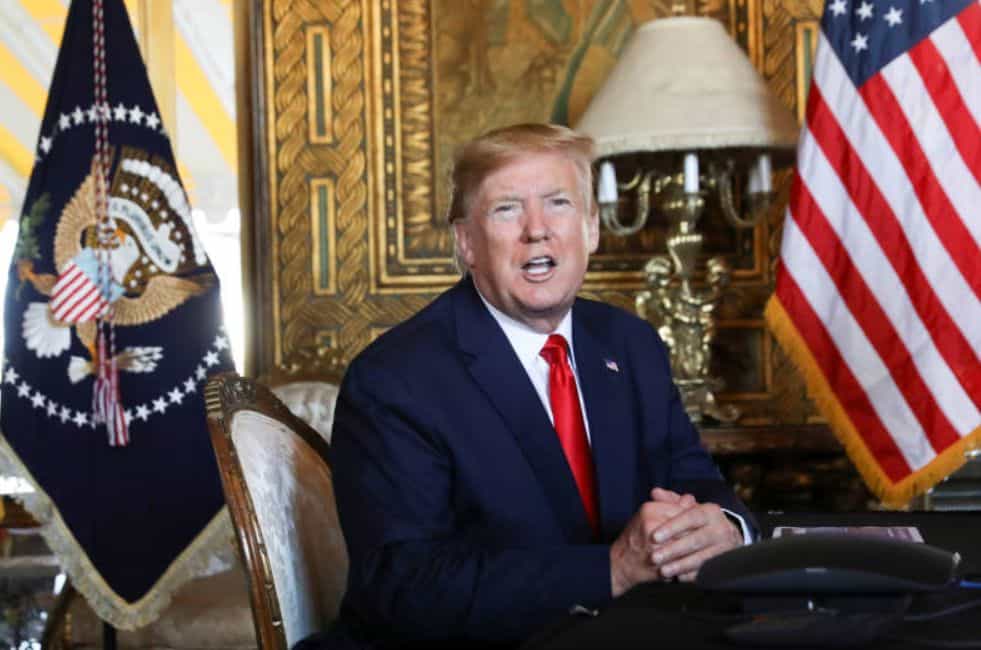The current economic boom in the US does not seem to have any effect on the popularity of Donald Trump, which remains at around 45%. Party loyalty has replaced the figures
The biggest challenge of covering the Trump Administration, from a journalistic point of view, is to accept that the rules of the game have changed. The usual manual, the one that was worth to cover a Bush or a Clinton, no longer works. In the era of populism, truth and lies mix much more often, the scandals no longer weigh the same and the media have gone from ramming like a bull to giving small wasp stings. Three years after Trump’s inauguration, we continue to learn these rules on the fly and stumble, like who runs inside a cave.
The traditional relationship between the progress of the economy and the popularity of the president on duty, for example, has been broken. That old commonplace of “is the economy, stupid” has become even more obsolete. The fact that the US GDP expands at a higher rate than the rest of the industrialized economies, that unemployment is at a minimum since the golden sixties, that inflation remains calm or that the Wall Street Stock Exchange breaks records almost every day. It seems to have no effect on the popularity of Donald Trump.
The data that best reflected this relationship was the consumer confidence of the University of Michigan. Since the fifties, this survey amalgamates the general feelings of citizens regarding the economic climate. Over the years it was seen that, when the index rose, so did the popularity of whoever was in the White House, and vice versa.
“From the beginning of the survey until the administration of President George W. Bush, there was a fairly direct relationship,” writes John Sides, professor of Political Science at Vanderbilt University, in ‘The Washington Post‘. “But Trump’s approval rating has not moved, even though people’s vision of the economy has improved since Trump took office in 2017.”
No longer “it’s the economy, stupid”
In the case of Ronald Reagan, for example, consumer confidence of 91.1 amounted to presidential popularity of 60%. Right now, the Michigan index is well above 96.8. People trust the future. But the approval of Donald Trump does not exceed a meagre 43%.
This divorce between the two indices was consumed during the last term of Barack Obama, and the separation has been increasing in the Trump era. An evolution parallel to that great current of the background that marks the agendas in the United States: polarization, which, although not mentioned, is no longer the dominant factor. The progressive destruction of national consensus.
A survey by the Gallup agency reflects that 73% of the voters do not agree with the other party at all, neither in the policies nor in the basic facts. According to a study by the Associated Press and the University of Chicago, 87% of Americans think that polarization “threatens their way of life,” and 42% say the rival party is “totally evil.” Figures that have been growing in recent years, and that are reflected in the strengthening of extreme currents in both parties: the rise of socialism among Democrats and trumpism among conservatives.
In this landscape, any event is like a football game in which moderate spectators, families, curious people, have been replaced by ‘hooligans’. At each ball pass, the stands roar and the stadium trembles; not even a good economy calms the spirits.
“It doesn’t matter if you hate it or like it, these numbers are real,” said Jim Cramer, the star of economic television CNBC. “You cannot contradict that these are the best numbers of our lives. It can not”. The journalist was referring to the latest unemployment data: 266,000 jobs created in November. A quarter of a million jobs in an economy that has been producing them, without interruption, since May 2009. A record.
Loyalty first, then the figures
For John Sides, the question is to see what can be more: the valuation of the economy or the valuation of the president. The old manual says that economic optimism is stronger; In the new manual, the opposite is true. Only a minority of Americans, 23%, believe that the economy has worsened in the last year. But, of this minority, 89% are Democrats. First, there is loyalty or hatred of the president; Then the figures.
In light of this data, it makes sense to understand why Trump, during 2018 legislative, went against the tide of tradition. As a study by the University of California reflects, presidents seeking re-election during boom times often emphasize the economy, and successfully. Donald Trump, on the other hand, made immigration his crusade; Instead of highlighting the good data of an economy roaring at full displacement, Trump placed the ‘invasion’ of Central American immigrants in his sights.
It’s as if each American had been given an animal to take care of. This little animal is called Indignation, and it needs its daily ration of controversy and contempt for the opposite. Politicians know and provide it, like someone who gives a starchy t-bone steak to a hungry hound. Prejudices against immigrants, the process of ‘impeachment’, the thousand scandals. The cold and abstract economic figures are no longer enough to feed the public. The fans simply have taken over the stadium.
